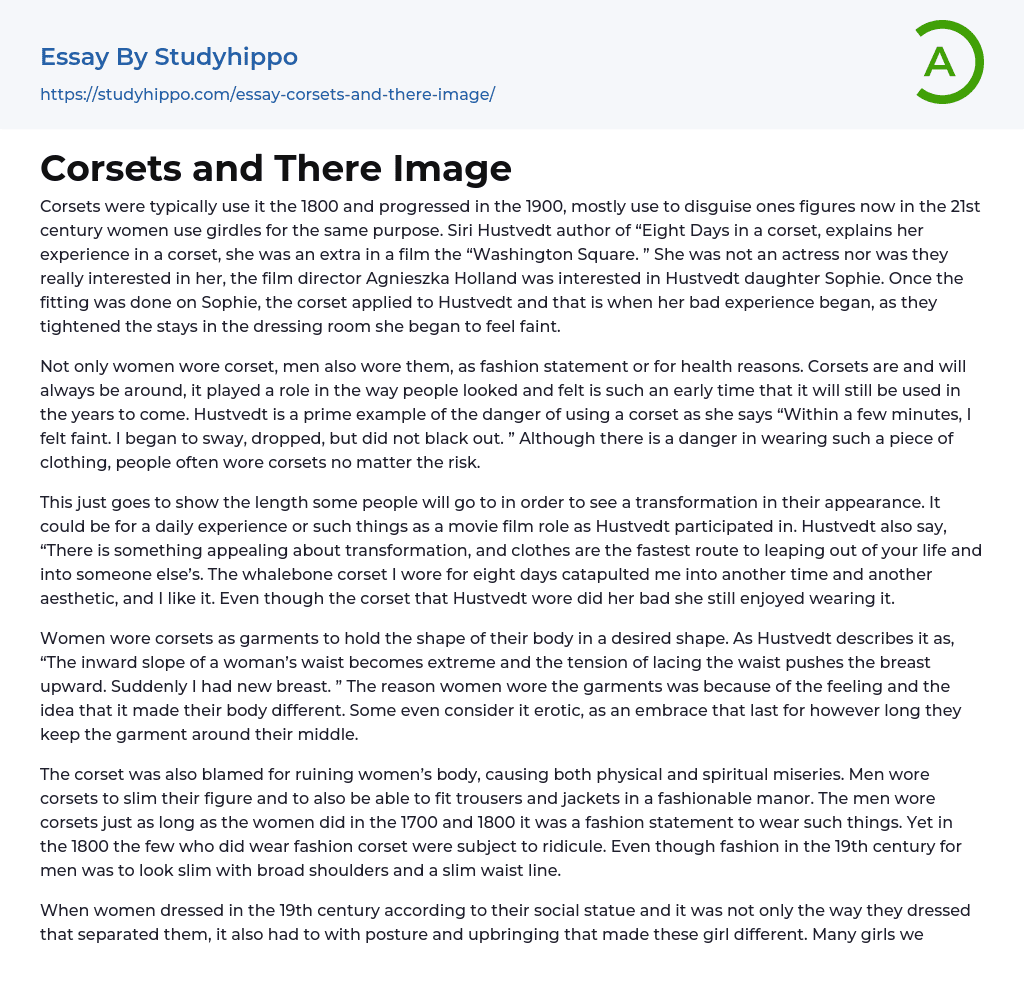During the 1800s and into the 1900s, corsets were commonly worn to shape bodies. Even in today's world, women still use girdles for this purpose in the 21st century. Siri Hustvedt recounts her personal experience of wearing a corset in "Eight Days in a Corset." Despite not being an actress herself, she had the chance to be an extra in the film "Washington Square," directed by Agnieszka Holland. Holland showed particular interest in Hustvedt's daughter Sophie, leading to both of them getting fitted with corsets. This marked the beginning of Hustvedt's negative experience as she felt lightheaded when the stays were tightened in the dressing room.
Throughout history, both women and men wore corsets for fashion or health purposes, which affected their appearance and well-being. Hustvedt's encounter demonstrates the possible hazards associated with using corsets as she recalls feeling lightheaded and
...unsteady without actually fainting. Nonetheless, despite these dangers, individuals persisted in consistently donning corsets.
This illustrates how far individuals are willing to go to alter their appearance, whether it be for everyday reasons or specific situations like a movie role. Hustvedt's personal experience highlights the allure of transformation. Clothing offers a swift means to escape one's own reality and immerse oneself in another person's world. As an example, Hustvedt donned a whalebone corset for eight days, which transported her to a different era and style. Despite the discomfort it caused, she found pleasure in this change.
Women used corsets as clothing items to maintain and shape their bodies according to their desired form. Hustvedt characterizes it as follows: "The waist of a woman become extremely inwardly sloped, and the act of lacing tightens the waist, pushing the
breasts upward. Suddenly, I had a new pair of breasts." The motivation behind wearing these garments was rooted in the sensation and perception that it altered their physique. Some even regarded it as erotic, viewing it as an enduring embrace as long as they kept the garment around their waist.
The corset was both praised and criticized for its impact on women, causing physical and spiritual suffering. Meanwhile, men also wore corsets to achieve a fashionable slim figure that would fit into trousers and jackets. Throughout the 1700s and 1800s, men joined women in wearing corsets as a fashion statement. Nevertheless, during the 1800s, few men who chose to wear fashion corsets were often ridiculed despite society's overall desire for men to have a slender waistline and broad shoulders.
In the 19th century, women's clothing and social status were strongly interconnected. Their attire, posture, and upbringing all played a role in distinguishing them. Girls from the upper class received thorough grooming similar to racehorses, including instruction in singing, playing musical instruments, and often learning Italian or French. However, these abilities were not natural talents but rather a mask worn by these women to present themselves as more intelligent than those of lower social status.




